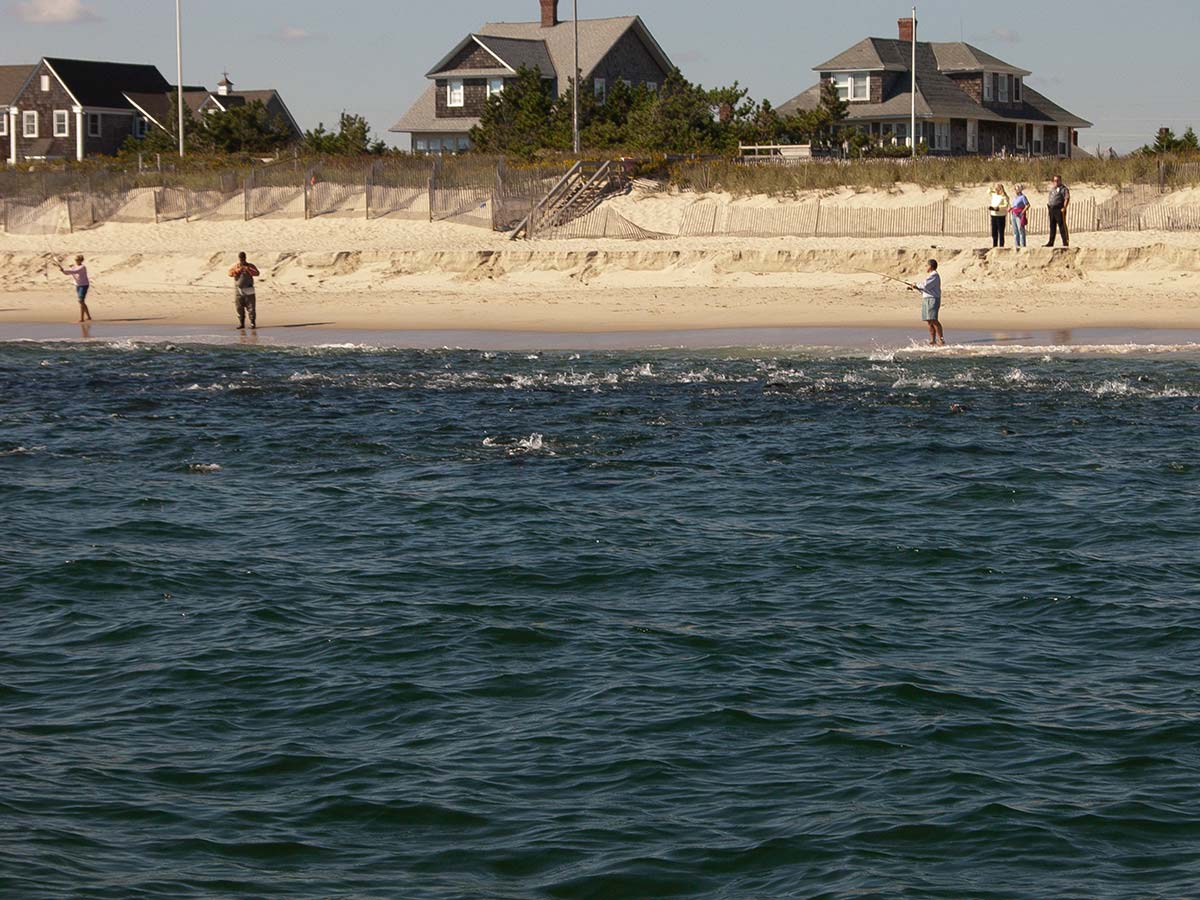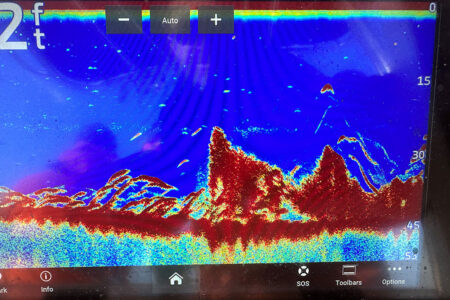With the mass mini-menhaden migration underway, let the madness begin!
Back bays, sounds, creeks and rivers are once again chocked with juvenile menhaden, and the time has come for their mass migration. As these savory morsels make their exodus, striped bass and bluefish voraciously feed to their hearts delight. Blitzes happen and both beach and boat anglers can cash in on the action.
The peanut bunker exodus picks up steam right around the time of the full (October 1 and 31) and new (October 16) moons this month. Spotting them along the beach when they are present is a no brainer, as they are easily visible, especially on calm flat days, as dark masses in the surf zone.
To connect with bass and blues, livelining a peanut is going to be your most successful method anytime. You can obtain baits either by cast netting them or snagging them when they are in front of you. To net your baits you will need a 4- to 6-foot diameter cast net and some skill in throwing the net into the pods. To snag your baits, place a 3/4- to 1-1/2-ounce egg sinker on your main running line and tie direct to a size 75-pound barrel swivel. Come off of this with a 24- to 36-inch leader of 20 to 30-pound test and tie on a 1/0 bronze treble hook.

It’s important to remember that “snagging and dropping” live baits for stripers is mostly a thing of the past at this point; while some states like Massachusetts have already adopted new circle hook requirements when fishing natural baits for striped bass. In 2021, all Atlantic Coastal states will adopt similar measures. Snagging your baits may be fine where you fish, but you’ll need to then transfer to another rig when targeting stripers.
To fish live peanuts, take a 2/0 to 4/0 Gamakatsu circle hook, depending on how big the peanut is, and place it just above the dorsal. You do not need any terminal tackle or weight. Using a weight will most likely cause the bait to helicopter when you cast it out causing it to come off the hook. Gently flip cast the bait into the pod and let it go. Get ready for a quick take as the bass will inhale the bait in one swipe. I like to use a Shimano 6000 Baitrunner spinning reel with my circle hooks. With the baitrunner feature all I have to do is engage the handle when I feel the take to get the hook set.
There are a selection of artificials that will also work well when the bass are not finicky and zeroed in on the real thing, with 4- to 6-inch swimming plugs, rattletraps, poppers and soft plastics all working well. For all these artificials, white or pearl is the preferred color to use. Also, fish these with a pause to emulate a stunned or injured bait. If you are tossing metal the shorty Hopkins, one ounce Kastmasters, 3/4- to 1-ounce Krocodiles, and the 2-ounce Crippled Herring are the ones to use. For best results with your metals, impart a fluttering action to them on the retrieve.
When peanut bunker are along the beach it is also an ideal time for fly fishers to hook into some quality fish. Select flies that have a wide profile or girth. Popovics’s hollow fleye, Geno’s Baby Angels, Lefty’s deceivers, Chinourd’s Wideside, and Farrar’s baby bunker are all good choices. Fly sizes should range from 4 to 6 inches. For fly colors, white is of key importance at this time. All your flies should have a large mix of it tied in. This can be blended with silver, pearl, or other light hues that will reflect and scatter light. White underbellies are important to match the white underbelly of the bait.




